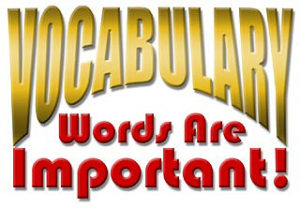The healthy union of a copy editor and a writer is the key to build a firm’s reputation and a writer’s body of work. However, as with any relationship, tough times can and do happen. Thus, the question: what are the successful ways a copy editor builds and maintains positive rapport with an author?
The answer is: there are numerous ways for a novice (or seasoned!) copy editor to work well with a writer. Respecting the writer’s voice and choosing the kindest words to suggest corrections will make a world of difference. And knowing how to edit both hard and soft copy will make the process smoother, too. This article will revolve around the journalistic copy, rather than fiction manuscripts (click here for my fiction posts).
Recognizing Talent
Depending on a firm’s choice to employ in-house writers or freelance writers, copy editors may not formally know whose works they are fixing. Both options of writers have their pros and cons. Regardless if there is an (in)formal relationship already, working knowledge and respect for the others position and process are critical.
A permanent writer hired by a firm likely knows the assigned subject well and has enough experience to edit his or her own work before publishing. The same goes for the copy editor. While specializing in editing text, a copy editor must know the mechanics of a well-written piece of copy. In many ways, a copy editor plays both parts—writer and editor. Because of a copy editor’s vast experience in the writing spectrum, he or she must tread carefully when advising a writer’s work.
Gentle Considerations
The most useful tool in a copy editor’s collection is his or her ability to convey suggestions. Writers spend much time producing editorials and product reviews for a company. Many hours of research are typical for a writer. Therefore, understandably, writers tend to possess an emotional connection to their work. As a result, a copy editor should take this into consideration.
Empathy is mandatory when sending revisions back to a writer. A copy editor should refrain from using any language he or she would themselves find aggressive. Never demand anything changed. Try not to use mocking phrases or expressions (or ignorant emojis!) to advise a writer you don’t approve of their work. Doing so will backfire. As a professional copy editor, you want your work to express your ability as a talented official of the English language. After all, you, the copy editor, are the gatekeeper.
Rather than use forceful or demanding words to display dissatisfaction, use gentle and kind reminders. For example, I always keep these in my editing repertoire:
- Consider
- Please
- Suggest
- Advise
- Clarify
The Do Not’s of a Copy Editor
As badly as you want to rewrite bad copy, you must remember your purpose: to suggest only. In rare cases, a copy editor may have the rank to (re)write entire passages of a writer’s work. Sometimes, depending on tight deadlines, for example, you might have carte blanche authority to completely disregard a writer’s article and produce your own. However, those moments are limited. A firm’s supply of writer usually stretches far. They typically have backups for the backups. That being said, a copy editor who cares for the craft will always have innovative ideas on deck and will enjoy creating copy of his or her own.
If the structure of the piece needs reworking, your job is to note it in the margins. Tell the writer why it needs restructuring. Suggest ways to cure the problem, but don’t do it for the writer.
If the logic or entire theme of the article is not what was called for from the company, don’t fix anything. As aforementioned, simply inform the writer ways to fix. Don’t ask why the writer didn’t write a correct article. That would be adding insult to injury. Leave major conversations of that nature to the supervisors.
If you are editing hard copy, flag issues on the same page. However, keep advice brief. Space is limited. If necessary, make a separate page to note any concerns.
Depending on the issue-at-hand, sometimes a copy editor might rewrite a passage. If a copy editor does, in fact, manipulate another’s work, a small note clarifying that you prefer your suggestion to theirs is warranted to keep good faith.
I have used “OK as edited?” I have yet to garner negative results from this approach.
A Copy Editor’s Critique
There are multiple avenues a copy editor peruses to locate discrepancies with a writer’s work. Let’s discuss the most important:
Libel
In my opinion as a copy editor, removing oneself from legal ramifications is a top priority when beginning an edit. Fact-checking for libelous copy should be done before all else. Once the information the writer used checks out as legitimate, then a copy editor can truly begin improving the article. Remember that!
But how does one who did not draft the article check the copy for facts?
Simple: you should request from the writer any sites or books or interview reports the writer would have used to produce his or her article. And a quick Google search could bring forth any references the writer may have used, too. While investigating these sources, the article in question should be present as the copy editor checks information.
Any quotes should be used just as the individual said them.
Language and Tone Proper
If a writer produces an article concerning the political involvement and economic stresses of global warming, then the language used should relate to that audience. Articles of such a professional and serious nature tend to attract educated audiences who enjoy straightforward sentences of correctly-written English. Also, the vocabulary used will likely be diverse. A scholarly essence will revolve around such a type. Therefore, a copy editor worth his or her salt will know to remove words that don’t fit.
Sentence Length
The only time long sentences can merit existence is in fiction. In the world of journalism sentences typically range in the medium length. Personally, as a copy editor myself, I prefer short to medium sentences.
Why?
Because online reading has changed everything. Gone are the days of reading massive blocks of dense paragraphs—at least when reading online. Massive paragraphs exist in hard copy newsprints and other media. Scanning a site is how we read now. Our brains compute information quicker and more efficiently when faced with short online passages.
Also, short sentences are somewhat more difficult to write. Producing complex sentences with multiple prepositions to link clauses are easy. We talk like that in real life. But that doesn’t mean a good writer should write that way. I dare you to edit your own work next time you finish an article and rewrite all of the longer sentences into shorter ones. You will improve your writing by doing so.
Stay Active
Try not to write passive sentences, please. I know sometimes it calls for it, but always try to write in the active voice. Spell checkers (and WordPress editor and certain plugins) will catch them. Finding passive sentences is good practice to teach yourself better writing techniques. Revising will lead you to rework the sentence and will likely make you develop a more concise way of telling information.
A copy editor may note a few passive sentences within your article before moving on. If there are too many to count, he or she might simply write a note for the writer to reread the entire article themselves for passive sentences.
Repetition
A personal pet peeve of mine is a lack of vocabulary. You are a writer, it is expected that you have a decent to great vocabulary to detail your article.
I hope.
A copy editor’s eye is graced with finding similar words. Now, I don’t mean frequently-used words like the, if, or, and, etc. I mean special keywords that are chosen to stand out in an article. Try to use those special keywords only once or twice in the entire work.
The same guidelines should be used when writing jargon or cliché expressions. A professional writer providing information on a serious topic should never use cliché phrases. It makes a writer appear sophomoric and uncaring towards the prestige of the article and firm.
PC as Possible
Now, more than ever, PC language is at its most potent. In the realm of journalism and overall media relations, I highly suggest a writer use politically correct language. While it may be tedious to do so, using PC language will save a writer (and firm) from lawsuits and reputation implosion. Excluding others, even by accident, can ignite a firestorm of bad publicity and can ruin a writer’s point before they even begin.
An effective way to write PC language is to trust your gut.
If you think that someone could take a specific word the wrong way, change it to something broader or more specific depending on the term or topic itself.
Keep the Writer Happy
As a copy editor, your primary focus will be improving a writer’s work. Although there are various steps regarding grammar and fact-checking you will take with each writer you do business with, it is more of an art than it is a science.
- Never bad mouth a writer. Regardless if the writer only works freelance and you will never meet him or her, never speak ill. Allow their work to define their reputation. And especially do not badmouth any of the in-house writers that you likely will see every day. This could lead to extremely negative consequences involving human resources and legal issues. Stay professional and refrain from gossip.
- If issues with a writer do reveal itself, a copy editor must remember that it is the writer’s opinion that is paramount. A proofreader or copy editor is simply there to provide suggestions to a piece of work.
- Maintaining a positive rapport with a writer will serve as beneficial for a copy editor’s superiors, as well. The less hassle they endure, the easier you will make their lives. Try to solve concerns with a writer as diligently as possible before involving another party.
- A copy editor will gather a good reputation from his or her relationships with writers. Word gets around the office very quickly. Office politics can get very ugly at times. Don’t give your coworkers any reason to talk bad about you.
- By keeping the writer happy, a copy editor will see a likely increase in pay and will be at the forefront for future promotions.
Edit Soft Copy
More often than not, a copy editor these days will be using some type of editing software. Not only is it faster, but it allows you to track changes, include attachments, use for email, and get various points of views with one click. In addition, they all have spell checkers and a databank of synonyms to help with diversifying your vocabulary.
As aforementioned, the most beneficial is the quickness it allows you to have contact with the writer of the piece. If time is of the essence (which it always is in the media world), cloud access is likely your best bet as a copy editor. Editing directly within the cloud allows for immediate replies and fixing of any issues.
A favorite of mine is the comment option that Word has in its Review section. Its ability to highlight problems and provide a small box for your comments is a copy editor’s dream. So much progress in the media writing world is done this way.
Edit Hard Copy
As an English teacher for many years, the majority of my time spent on correcting papers is notable. Although editing software will likely be the primary mode of copy editing, many times hard copy edits are warranted.
Depending on the writer you are in contact with, there is a vast number of editing symbols you can use. However, I have found that some writers are not familiar with such symbols. So, keep it simple. Using pen (red, of course!), simple notations in the margins and around the word or phrases will do the job. Remember to use the soft language I stated above.
If need be, a separate page (or use the back side of a page) is nice for a summary of notes. Writers tend to genuinely appreciate this. It shows that the editor didn’t just mark their work, but instead took the time to jot down a few thoughts to improve their work.
However, a copy editor should use major caution if he or she takes the time to write paragraphs of notes. Many new editors sometimes lambast a writer rather than also noting the good things the writer has done, too. To solve this, use the sandwich technique:
- Begin by finding elements in a writer’s work that are note-worthy. This could be anything. Just find something that will soften the upcoming section where you will critique the work.
- The middle part is where you relay the issue you have with the piece. Still using soft PC language, the expectations are for the copy editor to drive the points home. The writer should understand that it is your job to correct his or her work.
- Finally, end with positive reminders of how well the work was written. State that if the concerns are fixed with your suggestions, the piece will be perfect and ready for publishing.
In the End
At the end of the day, the writer’s opinion reigns supreme. A copy editor is there to assist and suggest. As badly as you may wish to completely rewrite the entire piece, you must fight that urge. Instead, realize that you, the copyeditor, play an intricate and significant part in the forward progress and prestige in your company’s future.
Knowing grammar and style and punctuation is a given. The relationship with the writer is at times challenging, but not hopeless. As a copy editor, you must know that it is how you interact with the writer that produces the best results.
For further reading on copyediting and proofreading, click the links. There have been many books that have helped bring me to this point of copyediting experience, but this and this are the main ones.
If you have any questions or comments or advice to give, please comment below or contact me by email.
~M



